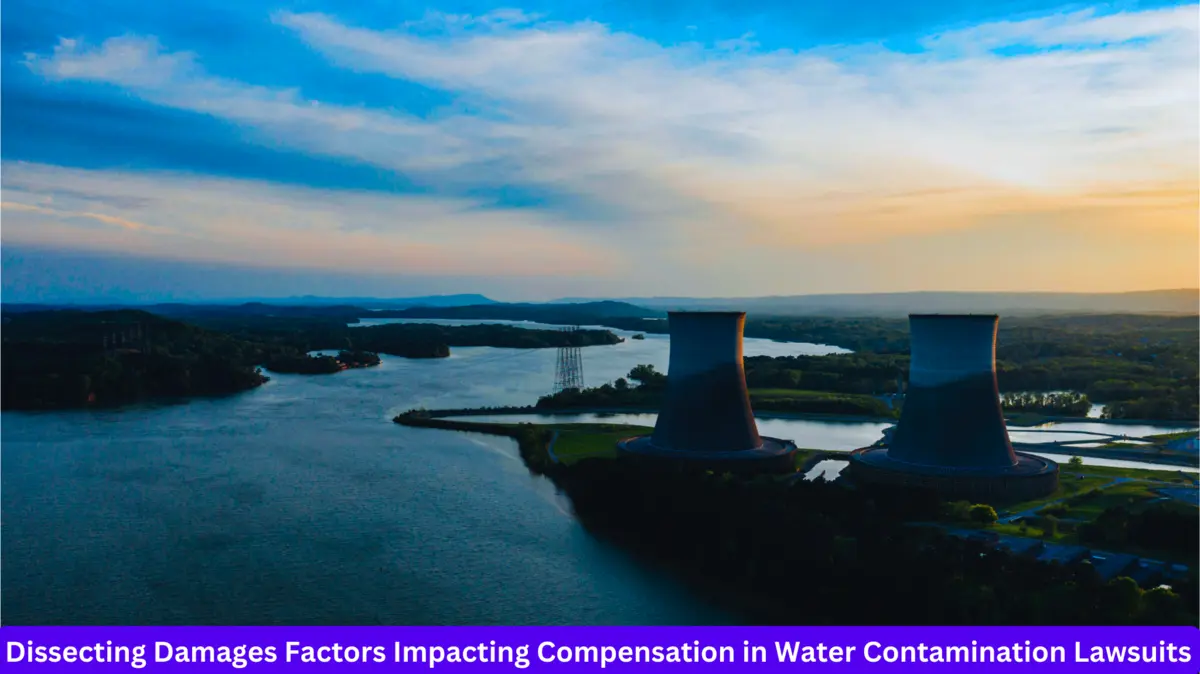Dissecting Damages Factors Impacting Compensation in Water Contamination Lawsuits
Clean water is the lifeblood of our communities. It is essential for drinking, cooking, and bathing but is often overlooked despite its fundamental necessity in our daily lives. But what if the water we rely on, the very foundation of life, becomes a source of sickness and fear? Water contamination lawsuits hold those responsible accountable, but the path to just compensation can be complex.
In this article, we will explore the anatomy of damages in water contamination cases, dissecting factors impacting compensation for victims.
Nature and Extent of Contamination
The very nature and severity of the contamination directly affect the damages awarded in water contamination lawsuits. Contaminants can range from bacteria and lead to industrial chemicals like per- and polyfluoroalkyl substances (PFAS). Each contaminant carries its health risks.
Lead exposure, for instance, can cause developmental delays in children, while PFAS contamination has been linked to various cancers.
The extent of contamination also plays a crucial role. A brief, low-level contamination event will likely result in lower damages compared to long-term exposure to a potent toxin. Public health data can be vital here. For instance, The Guardian reported that an Environmental Working Group study found over 200 million Americans may be exposed to PFAS-contaminated drinking water.
Such widespread contamination can significantly impact the number of claimants and the overall scale of damages awarded.
Health Effects and Medical Costs
Exposure to pollutants in drinking water can result in various adverse health effects, including acute illnesses, chronic conditions, and heightened cancer risk. Arsenic, lead, and VOCs are linked to health issues like cardiovascular diseases, neurological disorders, and developmental abnormalities, notably in children. These pollutants pose significant risks to human health and well-being, warranting comprehensive mitigation efforts.
These health impacts not only cause physical suffering but also incur substantial medical costs for affected individuals and communities. Medical expenses may include doctor visits, hospitalizations, diagnostic tests, prescription medications, and long-term treatments for chronic conditions. Also, the psychological toll of living with the fear and uncertainty of health risks associated with contaminated water cannot be overlooked.
According to the CDC, the United States boasts a safe drinking water supply. However, approximately 7.2 million Americans fall ill annually from waterborne diseases. These alarming statistics underscore the profound health effects and substantial medical costs associated with waterborne illnesses.
It further emphasizes the critical need for comprehensive compensation in water contamination lawsuits.
Property Damage and Economic Losses
Before discussing property damage and economic losses in water contamination lawsuits, it’s crucial to highlight the Camp Lejeune water contamination incident. Residents and personnel at the base were exposed to toxic chemicals in their drinking water for decades, including VOCs like TCE and PCE. These contaminants posed significant health risks to those living and working on the base.
This exposure resulted in widespread health issues, including various cancers and birth defects, among those living and working on the base.
In water contamination lawsuits, property damage encompasses diminished values and physical harm to structures and belongings, reflecting significant impacts. Contaminants can corrode plumbing, stain fixtures, and degrade materials, necessitating costly repairs and lowering property resale values. Also, the stigma of contamination can further depress property values, worsening economic losses.
In the Camp Lejeune case, families endured health consequences and substantial economic hardships from property damage and loss of income. The federal government set up a compensation program for eligible individuals and families affected by the contamination. It recognized the significant economic toll caused by the toxic water supply.
The Camp Lejeune compensation program underscores the vital connection between water contamination, property damage, and economic losses. It emphasizes the necessity for comprehensive restitution mechanisms to tackle the multifaceted impacts of environmental disasters on affected communities and individuals. Such initiatives are crucial for providing relief and fostering resilience in the face of environmental adversity.
TorHoerman Law highlights that the Camp Lejeune compensation program, established under the Camp Lejeune Justice Act, became law in August 2022. Signed as part of the Honoring Our PACT Act by President Biden, the Camp Lejeune Justice Act permits eligible individuals to file administrative claims. This includes military personnel, veterans, family members, civilian workers, and those present at Camp Lejeune for over 30 days between 1953 and 1987.
Legal Liability and Responsibility
Determining legal liability is pivotal in water contamination lawsuits, shaping compensation allocation and accountability. Multiple parties, from industrial facilities to municipal water utilities, may be implicated. Legal theories like negligence and strict liability establish culpability and responsibility for contamination.
Key factors influencing legal liability include adherence to regulatory standards and the duty of care towards communities and the environment. The foreseeability of harm caused by contamination is also crucial. Also, the availability of evidence, expert testimony, and precedent-setting judgments significantly impact legal outcomes and liability determination for defendants.
Environmental Remediation Costs
One of the most substantial components of compensation in water contamination lawsuits is environmental remediation costs. Upon identifying contamination, remediation efforts become crucial to prevent harm, restore water sources, and promote environmental sustainability in the long term. Environmental remediation includes groundwater treatment, soil remediation, habitat restoration, and infrastructure upgrades to curb pollution and restore ecosystems.
These remediation efforts incur significant expenses, often running into millions or even billions of dollars, depending on the extent and severity of contamination. Also, the complexity of remediation processes, regulatory compliance requirements, and technological advancements further contribute to the cost considerations.
According to The Center for Public Integrity, the cost of hazardous site cleanup is rising as Superfund resources diminish. In the past decade, the EPA allocated $243 million yearly for Superfund cleanup, but future estimates indicate a need for $335-681 million annually.
The EPA endeavors to hold responsible companies accountable by billing them for contamination costs.
Litigation Process and Legal Strategies
Water contamination lawsuits involve a complex and lengthy litigation process, necessitating precise legal strategies. Each stage, from complaint filing to trial proceedings, requires meticulous attention and strategic decision-making. Legal tactics typically utilize scientific evidence, expert testimony, and case law to establish liability and secure compensation for plaintiffs.
Alternative dispute resolution methods like mediation or settlements can hasten resolution and alleviate burdens on parties. Successful litigation outcomes depend on adept legal representation, persuasive advocacy, and grasping the interplay between legal principles and environmental dynamics.
Regulatory Compliance and Enforcement
Regulatory compliance and enforcement significantly impact water contamination lawsuit outcomes, shaping liability and compensation. Agencies like the EPA and state environmental departments set standards, regulate pollutant discharge, and monitor compliance to safeguard water quality and uphold environmental laws. Their oversight is crucial in ensuring accountability and protecting public health.
However, regulatory oversight’s effectiveness can vary, facing gaps in enforcement and resource constraints. Regulatory capture poses challenges, potentially undermining robust environmental protection. Inadequate oversight may worsen contamination risks, extend pollutant exposure, and erode public trust in regulatory agencies.
Understanding the Complexities of Compensation in Water Contamination Lawsuits
In the labyrinth of legal battles over water contamination, achieving justice demands a nuanced understanding of compensation factors. It’s crucial to recognize justice extends beyond monetary compensation, embodying environmental stewardship and public health protection.
By analyzing compensation factors, we illuminate legal intricacies and advocate for clean water as a fundamental right, not a privilege. This pursuit underscores the need for equitable access to safe water and accountability for environmental harm.







